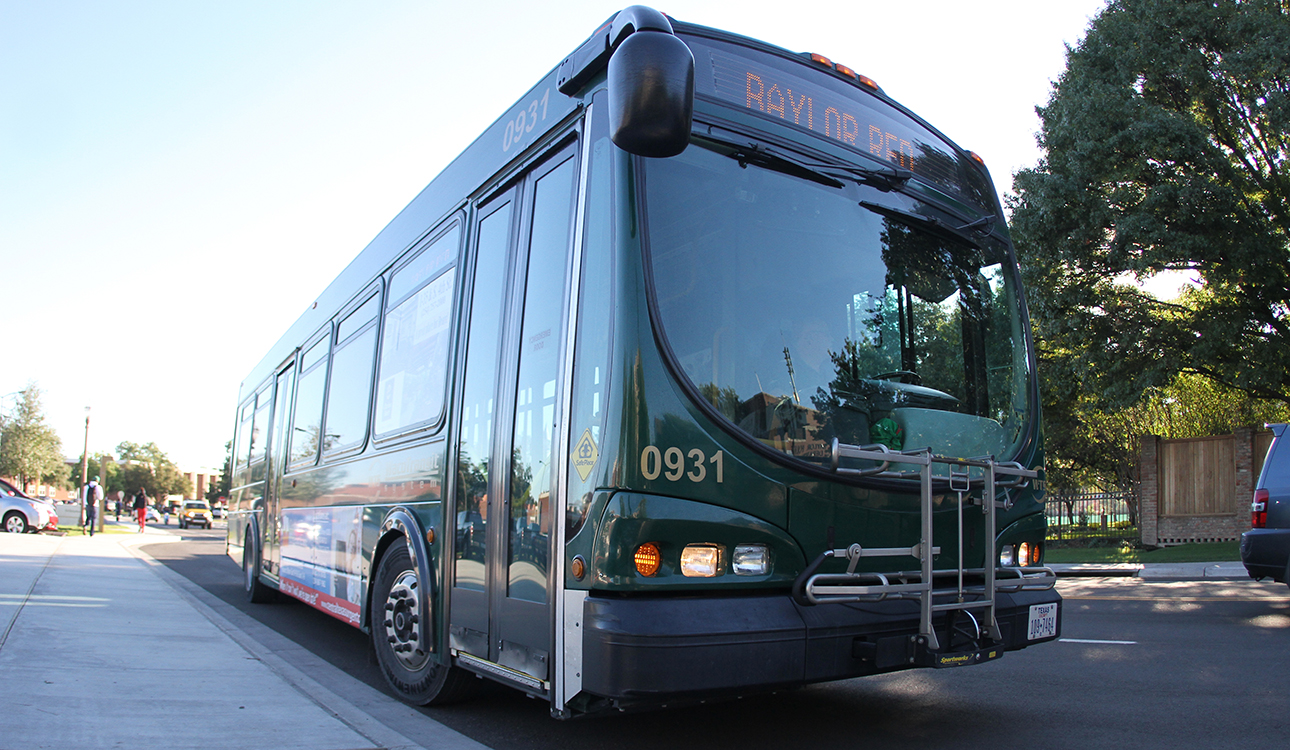

Travis Taylor | Lariat Photo Editor
By Rebecca Fiedler
Staff Writer
The face of transportation in Waco may be changing. The city has hired firms CDM Smith Inc. and RJ Rivera Associates to conduct a study of transportation downtown and to provide an analysis and recommendations for the city. The direction of streets, make-up of sidewalks and routes of buses may be updated in the coming decade.
The study has been going on since early January, assessing downtown transportation and gathering input from the community, and final reports are expected around July. The study is funded through grants from the Federal Transit Administration.
“There’s a strong connection between transit and economic development,” said Charlie Sullivan, a planner on the project with CDM Smith. “It’s all just one question. We have to start somewhere. Transit is seen by a lot of people as a good place to start. A lot of the people we’ve talked to said it’s obvious that the city of Waco is committed; they’ve come a long way, but there’s still a bit further to go.”
Waco Transit carries over 1 million passengers a year, said John Hendrickson, general manager of Waco transit services.
“The changes we may make could include re-routing some of the bus routes, enhancing sidewalk connectivity, enhancing bicycle activity, etc.,” Hendrickson said. “We’re trying to look at things that will make this a more livable, walk-able community in the downtown area.”
Vice president and transit market leader of CDM Smith Michael Townes said the project will have a focus on transporting Wacoans to work.
“It will look to enhance the connectivity of these modes of transportation so as to provide as much of a transportation infrastructure support for economic development and access to jobs,” he said. “It will spur transit-oriented development and improve the urban development and livability in downtown Waco.”
Businesses interested in coming to Waco will often look into the public transportation situation to see if their workforce would be able to get to the potential business location, Townes said.
Now the firms are working on gathering input from stakeholders, Townes said, including elected officials, civic leaders, business leaders, the local chamber of commerce, downtown development corporations, county elected officials, neighborhood association leaders and Baylor officials, as well as the general public.
“Baylor University is an indispensable stakeholder,” Townes said. “The largest employment densities downtown, the largest population density downtown, the largest transit ridership with bus stops, and the densest housing developments in terms of residential areas are all adjacent to Baylor University.”
The firms are focusing not only on city leaders’ and businesses’ opinions, but on the thoughts of Wacoans themselves, Townes said.
“The most important stakeholder is the public at large,” he said. “We want to have the broadest input from all of those groups.”
The idea to update transportation has existed for a number of years, Hendrickson said. The city has always had something to take away this focus, though, like the announcement of housing complexes being built and the upcoming McLane Stadium.
“Now it seems like it’s the perfect time to kind of tie all these things together,” Hendrickson said.
CDM Smith and RJ Rivera researchers are currently observing the downtown environment.
“They will take that information, and then the information that they gain from open public meetings we’ve had here in town last week, and will look at things to make recommendations on what changes we should make to enhance downtown traffic,” Hendrickson said.
The firms have had numerous recent open house meetings, where attendees were separated into groups and shown maps of Waco. The attendees were asked what they’d like to see happen with transportation in Waco.
“Transportation affects all demographics,” Hendrickson said. “Whether you ride a public transportation vehicle or not, it affects congestion and the sensibility people have. If everybody drove downtown, you’d have congestion issues without public transportation.”
Some people like the one-way streets downtown because they can get in and out of downtown quickly, Hendrickson said. However, one of the things that was suggested at an open meeting was that two-way roads may be beneficial.
“One of the things that we want to do is slow people down and get them to look around and see what all we have going on downtown, which can enhance the downtown area,” Hendrickson said.
Townes said Waco is well-structured for pedestrians, as far as the firms have discovered in their research.
“Waco has a very walk-able downtown,” he said. “In the core of downtown, our research shows, it only takes 17 minutes to walk form one origin to the most distant location form the core of downtown, where the government buildings are and most of the businesses are. Beyond that, in greater downtown, if you exclude the zoo, it’s only a 22 minute walk time from an origin to the furthest destination. This walk-ability is a very important characteristic for livability. Without drawing specific conclusions, we see ways that can be enhanced.”
In researchers’ assessments of Waco sidewalks, however, they have seen there are significant gaps in the sidewalks in downtown, and some have been aged and broken, Townes said. In eastern downtown, sidewalks haven’t even existed in places. One of the firms’ recommendations may be the improvement of some of these sidewalks, he said.
There are nine bus transit routes in downtown, but they operate on a 60 minute frequency, which Townes said is not an efficient service.
“One could imagine there will be a range of recommendations on how to go about improving public transportation and increasing that frequency, making it more accessible so that people can get to their jobs,” he said. “That’s a real focus here; getting people to work and getting economic development going.”
Anyone interested has nine days to put their opinions in on the Waco website at . Hendrickson said those involved in the study are excited to see what all of the public thinks.




